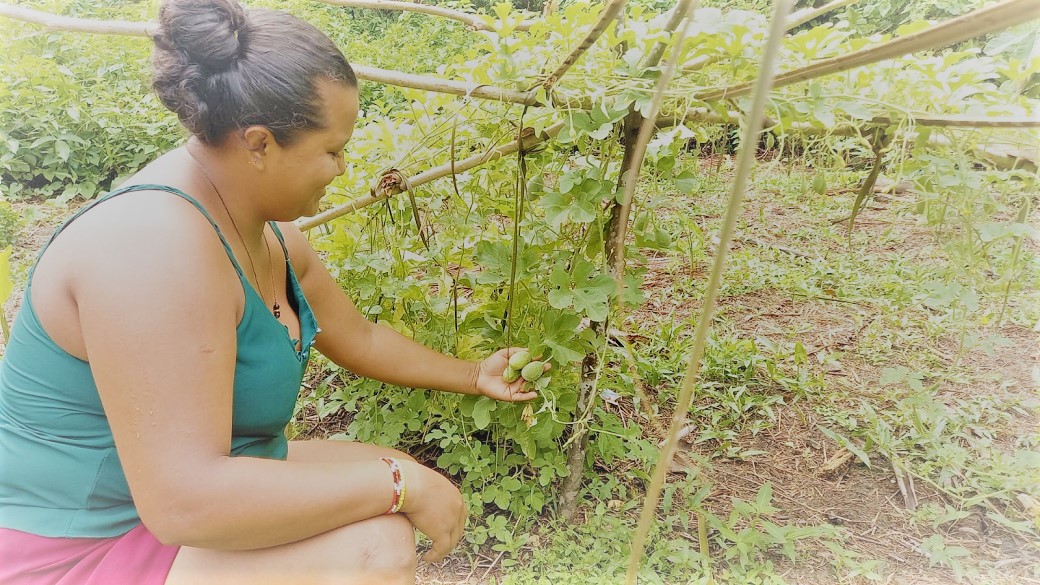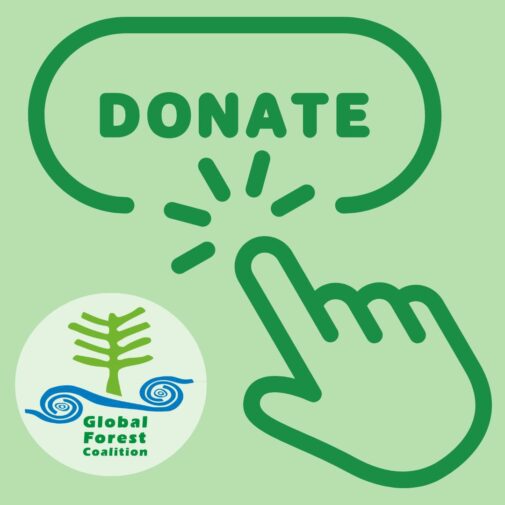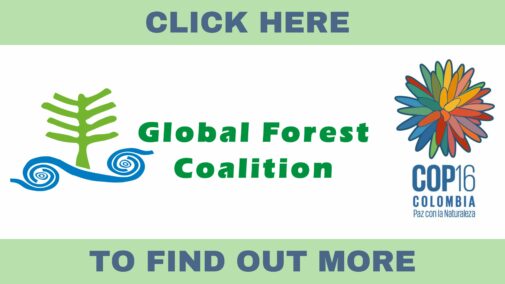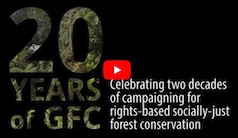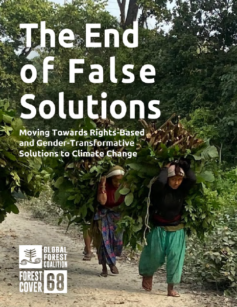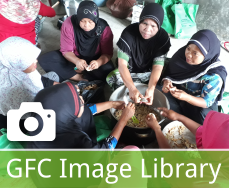‘Forests represent health’: An interview with Fundaexpresión on the International Day of Forests
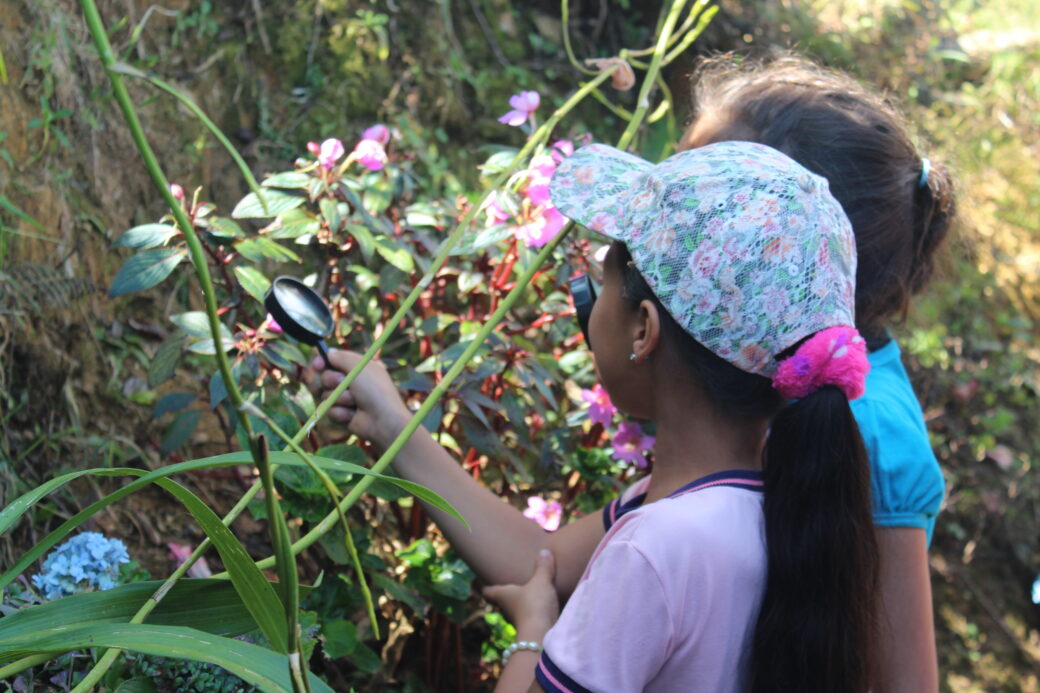
Photo: Biodiversity monitoring workshop with children in the Selva Alto Andina in Suratá, Santander, Colombia
On the International Day of Forests, the Global Forest Coalition salutes the work of our member organizations who work tirelessly to protect our forests, and the rights of local communities, women and Indigenous Peoples. They are often on the front lines of the struggle to ensure gender-just, rights-based approaches and responses to threats to our forests and environment. The capitalist, corporate, patriarchal capture of climate policy means that often, false solutions are imposed on our communities and forests, with severe negative impacts, in particular for women in all their diversities.
And indeed, an International Day of Forests may seem a little strange for the millions who live in and around forests in parts of the world where there isn’t a false division between humans and nature. For them, forests aren’t something to honour once a year: they are to be cared for and protected every day. They know that these ecosystems are vital to planetary health and the health of all living creatures.
Today, we bring you the story of a GFC member group that is advancing rights-based forest protection and providing real solutions to the climate and biodiversity crisis. Meet Fundaexpresión.
Fundaexpresión is a cultural and environmental organization in Colombia with a mission to serve the community and improve the living conditions of the population through processes of social organizing, generating alternative economies, and preserving cultural and environmental heritage. It develops social, environmental, and cultural research programs with the active participation of local communities, artists, women, youth and children, designed to strengthen the self-management skills of grassroots groups.
We asked some questions to learn more. Here is an interview we conducted, edited for clarity.
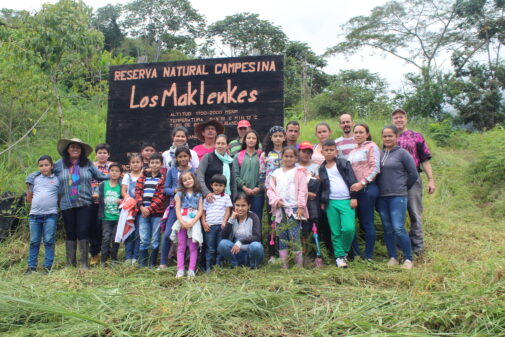
Reserva Campesina y Comunitaria Los Maklenkes, Selva Andina Floridablanca – Santander, Colombia. Photo: Fundaexpresion.
Describe the work your organisation does in relation to forests.
Fundaexpresión is part of the Collective of Peasant and Community Reserves of Santander in northeastern Colombia. It has promoted reserves as spaces for life, community conservation, culture and identity in areas where Andean forests still exist despite the odds. The groups of the Collective have promoted ecological restoration in degraded places, or places where deforestation or monocultures have been implemented.
We also promote agroforestry systems in which forests and jungles are a main source of learning through popular education. Forests and jungles are also essential for local economies, through the planting and harvesting of fruits in particular. Also, firewood gathering that is done properly through the pruning of trees can provide energy for food for the families that inhabit and protect forests.
The theme of this year’s International Day of Forests is forests and health – what does that mean to you?
Forests are indispensable to the physical, cultural, spiritual and material health of the people. They have great significance because we couldn’t imagine living without forests—they allow for the survival of human and non-human beings, which is vital for both air, oxygen, water, plants and medicine in all its essence and permanence. Forests provide peace, tranquillity, a world of possibilities to connect with nature. They are a source of community wisdom and knowledge about living well (buen vivir), a source of welfare and joy.
How do forests and health specifically relate to women, Indigenous Peoples, peasants and other groups?
Forests represent health for women, Indigenous peoples, peasants and farmers. And by respecting the rights of nature to exist, you provide spaces for recreation, forests can become sources of food and water and insects that pollinate and plants that help to meet local needs. It is mainly women’s groups, Indigenous peoples, peasants and farmers who have maintained the balance of the forests by conserving seeds, wisdom about medicinal plants, and animals as a source of inspiration for living in peace and harmony with nature for the defence of the territory and livelihoods.
What are the biggest challenges to your work? What are your biggest achievements?
The biggest challenge is seeing how every day there are attempts to deforest, to use the land for other purposes that are purely commercial, and to change land use in favour of mega-projects in mining, agribusiness, highways and roads, which destroy and fragment the forests. We propose a communitarian form of conservation that is opposed to the idea of seeing nature merely as an environmental service, as presented by the imposed conservation models that don’t consider the communities that have always protected and conserved the forests.
Our greatest achievement is coming together with various peasant associations to conserve our territories, including the forest. For more than 20 years we have been able to work together to declare reserves, as a real and symbolic foundation with its own identity and strengthen community conservation.
What inspires you and gives you hope?
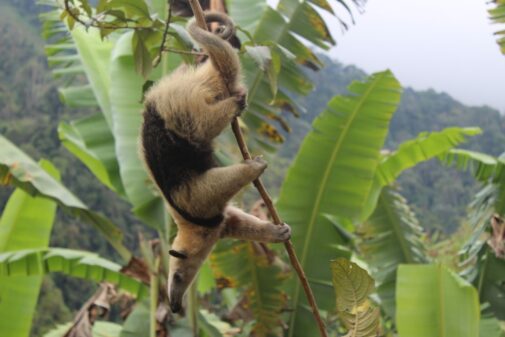
Oso hormigero, espacio de vida para la fauna Reserva Campesina Alma- Matanza, Santander, Colombia. Photo: Fundaexpresion
We get hope and inspiration from the girls, boys, women and elders who dream of declaring reserves for themselves and future generations, and also to provide the possibility of life to non-human beings: water, insects, birds, reptiles, mammals, trees. All beings, no matter how small, deserve to exist.
A source of hope is that the reserves are spaces of knowledge and the promotion of peace with nature, where we can make peace with armed groups not only in Colombia, but also bring peace to other living spaces such as the forests of the Andes.
We are filled with joy by the exchanges that we have arranged between peasants, farmers and indigenous people and other local groups to see the forests as vital spaces of popular education.
What is the role of Indigenous Peoples, women, and local communities in safeguarding our forests?
Indigenous peoples, women and local communities are the custodians of our forests. They are the ones who have allowed the forests to survive through space and time. They are the ones who help balance against the climate crisis, protect biodiversity and food.
What is access to decision-making power and control of resources like for women in the communities you work with?
Women have gained great strength in terms of their abilities to conserve seeds, water, food sovereignty and local economies. However, it should be noted that gender inequality still prevails, and many women still face difficulties in acquiring decision-making power and control of the resources that provide sustenance and are part of the family economy.
Can women and men own land under the same conditions? What is the status of women in the agrarian reform and land distribution taking place in Colombia now?
In reality, women and men do not enjoy the same conditions. Women are lagging behind economically, in terms of access to land. Right now, it is being proposed that women should have greater access to land. We are also promoting an agrarian reform in which the rights of peasant women and men are respected.
What are the biggest challenges for the local communities you work with, in particular women?
The challenges faced by local communities are the homogenization of ways of life; that is, the attempt to “modernise” and introduce all inhabitants to mass consumption, as well as the development of harmful projects that deplete the rainforests.
For women, the greatest challenge is to overcome the patriarchal system, which prioritises the voices and decisions of men, a situation that is prevalent in our territories, as is the case throughout our country.
Can you tell us about a forest-related project you are proud of?
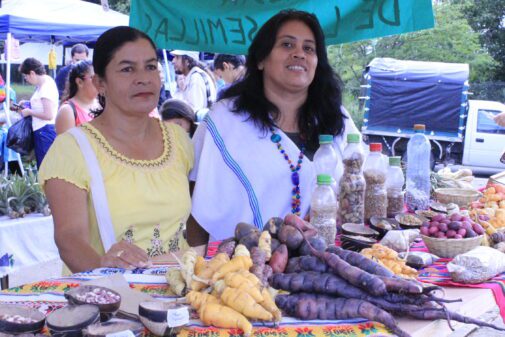
La conservación comunitaria de bosques apoya la diversificación de semillas y las economías locales – Barrio La Joya Bucaramanga
The greatest source of pride is knowing that we have contributed to providing real solutions to the climate crisis through community conservation, although it is also a great challenge. We are proud to have endured over time and built relationships that allow us to remain rooted in the territory.
We have several projects related to forests. We are proud that, in our reserves, in a country like Colombia where there is internal displacement of communities, we have also seen the displacement of animals and we have prevented it. Emblematic cases such as the sloth bear, howler monkeys, flora and fauna that now have the possibility of being and existing. Respect for them and that their presence can be evidenced through community monitoring of biodiversity. We have created affective ties with nature, especially among girls, boys and youth.
Community conservation has also helped us to demonstrate that pollination is possible, together with a group of young women dedicated to beekeeping, which has transformed their lives and revitalised their economic livelihoods.
When talking about biodiversity monitoring, it is the young people, girls and boys who, through popular education, allow their families to have hope and believe that there is wealth in their territories. They can feel proud of that and build a dignified life, improving their living conditions, which the reserves provide for.
Translation by Megan Morrissey

